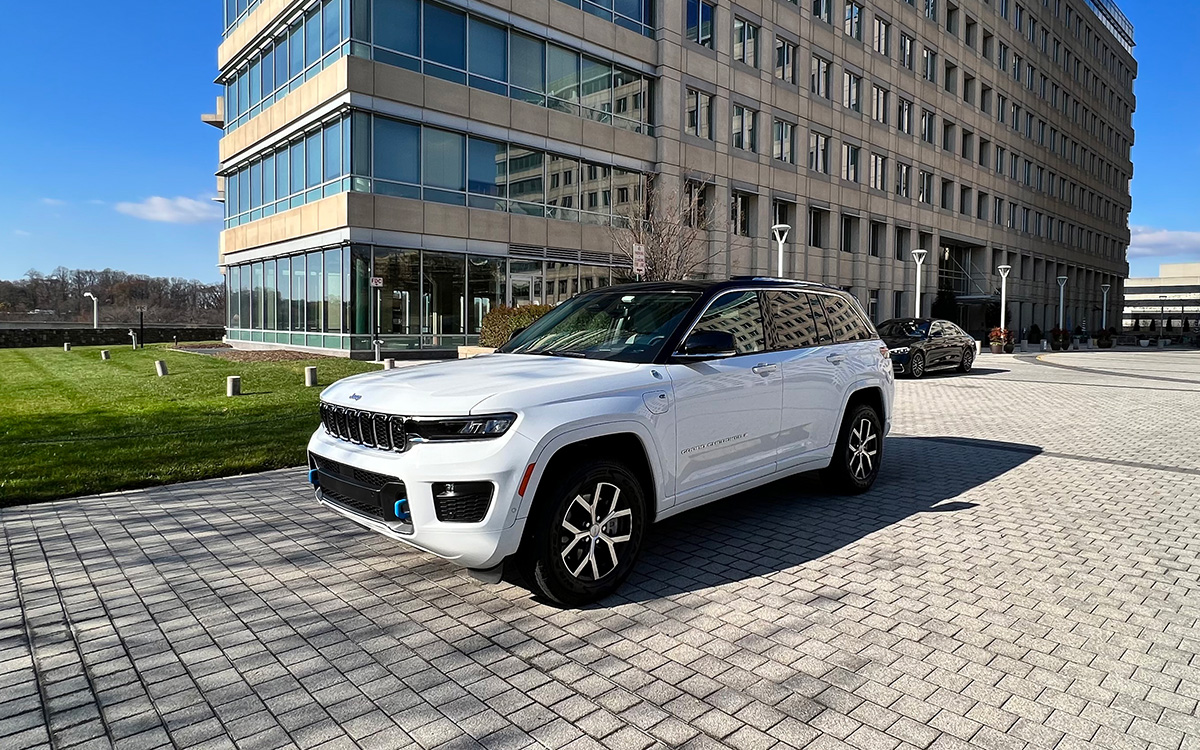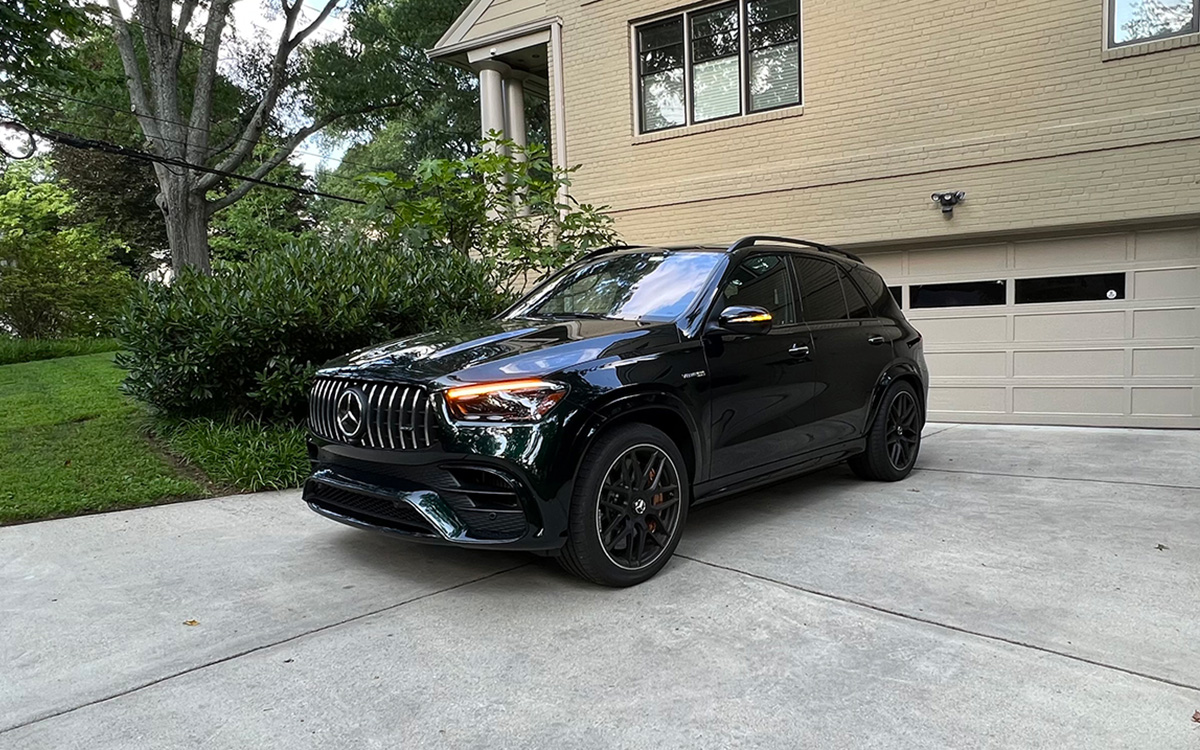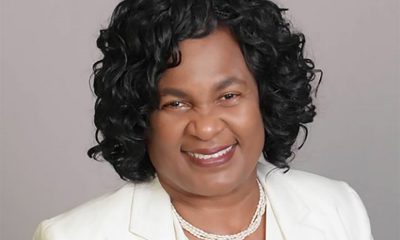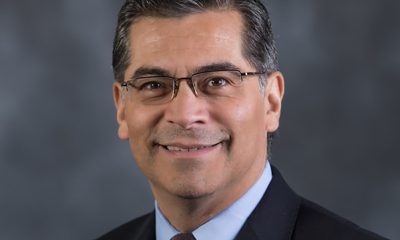Living
Gay, bi men remain key to HIV epidemic
After 30 years of AIDS, many breakthroughs but infection rates on the rise
On June 5, 1981, the U.S. Centers for Disease Control and Prevention published an article in its authoritative journal Morbidity and Mortality Weekly report that experts now consider the first signal that an unprecedented worldwide epidemic had begun.
“In the period of October 1980-May 1981, 5 young men, all active homosexuals, were treated for biopsy-confirmed Pneumocystis carini pneumonia at 3 different hospitals in Los Angeles, California. Two of the patients died,” the MMWR article stated.
“Pneumocystis pneumonia in the United States is almost exclusively limited to severely immunosuppressed patients,” said the article. “The occurrence of pneumocytosis in these 5 previously healthy individuals without a clinically apparent underlying immunodeficiency is unusual.”
It would take another few years before scientists named the condition detected in the men discussed in that MMWR article as Acquired Immune Deficiency Syndrome or AIDS. The name AIDS followed an earlier term used by some researchers and the media – Gay Related Immune Disorder or GRID.
In reflecting on the tumultuous developments surrounding AIDS over the past 30 years, leaders of AIDS advocacy organizations and LGBT activists in the U.S. who lived through the early years of the epidemic say that, to some extent, the MMWR article of June 1981 still has considerable resonance for gay men.
They acknowledge that so much has changed for the better over the past 30 years, including breakthroughs in biomedical research resulting in highly effective drugs that transformed AIDS from a death sentence into a manageable, chronic illness like diabetes.
But AIDS activists also point out that HIV and AIDS continue to disproportionately impact gay men or men who have sex with men (MSM) in the United States and other countries.
And although the perception of AIDS as a “gay disease” has largely receded from the minds of most Americans, AIDS activists say they find themselves in the ironic position of having to remind Congress and state and local governments that more resources and funding are needed for HIV prevention programs targeting gay and bisexual men.
“MSM is the only group for whom, according to the CDC, new infections are still increasing,” said Ronald Johnson, vice president for policy and advocacy for AIDS United, a national group formerly known as AIDS Action.
“So there continues to be a concern that there is not enough targeted prevention resources to MSM, particularly MSM of color and young MSM of all races and ethnicities,” Johnson said.
According to the CDC, while MSM account for about 2 percent of the U.S. population, more than half of all new HIV infections in the U.S. each year (53 percent) occur among MSM. CDC data also show that MSM make up nearly half of all people living with HIV in the U.S. – 48 percent.
CDC figures show that white MSM “account for the largest number of annual new HIV infections of any group in the U.S., followed closely by black MSM,” according to a CDC fact sheet released last month.
“There are more new HIV infections among young black MSM (aged 13-29) than among any other age and racial group of MSM,” the fact sheet says.
The Obama administration, with input from AIDS advocacy organizations, released a National HIV/AIDS Strategy document in July 2010 that, among other things, calls for an aggressive effort to develop better HIV prevention programs targeting MSM.
Johnson and Carl Schmid, deputy executive director of the AIDS Institute, a national advocacy group, praised the administration for developing the strategy document, which they say covers most of the bases needed for addressing HIV prevention programs for MSM.
But the two said the proposals in the strategy document have yet to be fully implemented. They note that delays in its implementation are due, in part, to the U.S. economic situation that has prevented needed increases in federal AIDS funds and severe cutbacks in state and local funding for AIDS-related programs.
Phill Wilson, president and CEO of the Black AIDS Institute, said in a commentary last week in the Washington Informer, a black community newspaper, that he fears the horrors of the AIDS epidemic of the 1980s, when friends and family members watched loved ones die due to a lack of effective medical treatment, could return to some degree in the next few years.
According to Wilson, if the federal government fails to boost funding for the federal-state AIDS Drug Assistance Program (ADAP), low income people who rely on the program to provide them the medications they need keep the AIDS virus in check could become casualties just as their predecessors became casualties years earlier. But this time, he said, an inability to gain access to medicine due to funding shortfalls would be responsible for their fate at a time when effective medicine is readily available.
He called such an outcome “immoral.”
The ADAP program was created under the Ryan White AIDS Care Act to provide life-sustaining drugs for low-income people with HIV and AIDS who are under insured or don’t have any health insurance to help pay for the drugs.
ADAP funding cuts by states and a large increase in the number of people applying for ADAP assistance has resulted in nearly 8,000 people being placed on state waiting lists for the AIDS drugs they need to remain healthy.
The health insurance reform law that President Obama proposed and Congress passed two years ago was expected to relieve the ADAP funding pressure on states when it takes effect in 2014. However, some states that oppose the law have filed lawsuits seeking to prevent its provision requiring all citizens to buy some form of health insurance from going into effect, making its outcome uncertain.
Nearly all AIDS advocacy groups support the law, saying it would strengthen medical care for large numbers of people with HIV/AIDS.
Dr. Anthony Fauci, director of the National Institute of Allergy and Infectious Diseases, an arm of the U.S. National Institutes of Health, has been the leading federal government official monitoring the AIDS epidemic and directing AIDS-related research since the disease burst on the scene in 1981.
In a speech commemorating the 30th anniversary of AIDS at NIH headquarters in Rockville, Md., on Tuesday, Fauci said he’s optimistic that an AIDS vaccine can be developed in the near future.
“We have scientific evidence that a safe and effective HIV vaccine is possible,” he said in a statement released on May 18.
“In 2009, a clinical trial in Thailand involving 16,000 people demonstrated for the first time that a vaccine could safely prevent HIV infection in a modest proportion of study participants,” he said. “Many of the best minds in HIV vaccine science are examining blood samples and data from the Thai trial to learn how the vaccine candidate prevented HIV infections and to consider how it could be modified to be more effective.”
Fauci said NIAID is also optimistic about development within the next few years of effective vaginal and rectal microbicides that can be used to prevent the transmission of HIV during sexual contact.
Fauci and other researchers have also pointed to studies showing the effectiveness to a certain degree of prescribing HIV drugs for use by non-infected people believed to be at high risk for HIV infection, such as men who have sex with men.
Known as pre-exposure prophylaxis, or PrEP, the use of this prevention measure is said to have the drawback of being less effective if people fail to take the drug as required. Some also have expressed concern that people using this prevention method are subject to potential side effects of the drugs and may be discouraged from using condoms, which experts say is one of the most effective methods of HIV prevention.
Events and developments in the early years of AIDS
• 1981: The CDC reports in its June 1981 edition of MMWR and subsequent editions that year that an estimated 170 gay men had succumbed to Pneumocystis carini pneumonia and Kaposi’s sarcoma, a rare skin cancer, over the preceding two years. The CDC studies of these cases cited a serious malfunctioning of the body’s immune system in those who contracted the conditions.
• 1982: Gay Related Immune Disorder, or GRID, became the first name to describe what is now known as AIDS. Cases reached epidemic proportions in the U.S., moving beyond clusters of gay men in New York, San Francisco and Los Angeles and into groups with no obvious risk factors.
• 1983: Gay leaders, independent medical researchers and health and social services agency officials testify before a congressional committee that the federal response to AIDS was highly inadequate. They issue a plea for the federal government and the Reagan administration to increase federal funding and federal initiatives to fight AIDS.
• 1985: In late July, actor Rock Hudson stunned the nation when he issued a statement saying he had AIDS and was receiving treatment in Paris that he said he couldn’t get in the U.S. He died three months later at age 59. His announcement and death drew massive mainstream media attention to AIDS. His death prompted his close friend, actress Elizabeth Taylor, to help found the American Foundation for AIDS Research to raise funds for AIDS causes.
• 1988: The NAMES Project AIDS Memorial Quilt makes its second trip to Washington in the spring, where it’s displayed on the Ellipse near the White House. Later that year, about 1,100 AIDS activists staged a protest at the headquarters of the U.S. Food and Drug Administration in suburban Maryland outside D.C., denouncing the FDA for taking too long to approve new drugs for people with AIDS. Police arrested at least 176 of the protesters after they blocked access to the FDA building’s main entrance.
Real Estate
The rise of virtual home tours
Adapting to changing consumer preferences in spring real estate

In today’s dynamic real estate market, the spring season brings not only blooming flowers but also a surge of activity as buyers and sellers alike prepare to make their moves. However, in recent years, there’s been a notable shift in how consumers prefer to explore potential homes: the rise of virtual tours.
For the LGBTQ community, these virtual experiences offer more than just convenience; they provide accessibility, safety, and inclusivity in the home buying process.
Gone are the days of spending weekends driving from one open house to another – unless that’s your thing of course, only to find that the property doesn’t quite match expectations. With virtual tours, you can explore every corner of a home from the comfort of your own space – find something interesting? Schedule a showing with any LGBTQ Realtor at GayRealEstate.com.
This is particularly significant for LGBTQ individuals, who may face unique challenges or concerns when attending in-person showings. Whether it’s the ability to discreetly view properties without fear of discrimination or the convenience of touring homes located in LGBTQ-friendly neighborhoods across the country, virtual tours offer a sense of empowerment and control in the home buying process.
Moreover, virtual tours cater to the diverse needs of the LGBTQ community. For couples or families with busy schedules or those living in different cities or states, these digital walkthroughs provide a convenient way to view properties together without the need for extensive travel. Additionally, for individuals who may be exploring their gender identity or transitioning, virtual tours offer a low-pressure environment to explore potential living spaces without the added stress of in-person interactions.
At GayRealEstate.com, we understand the importance of adapting to changing consumer preferences and leveraging technology to better serve our community. That’s why our agents offer an extensive selection of virtual tours for LGBTQ individuals and allies alike – visit our website, choose an agent and within minutes you’ll have access to the Multiple Listing Service (MLS) via their website.
From cozy condominiums in bustling urban centers to sprawling estates in picturesque suburbs, virtual tours showcase a wide range of properties tailored to diverse tastes and lifestyles.
In addition to virtual tours, GayRealEstate.com provides comprehensive resources and support to guide LGBTQ buyers and sellers through every step of the real estate journey. Our network of LGBTQ-friendly agents is committed to providing personalized service, advocacy, and representation to ensure that all individuals feel respected, valued, and empowered throughout the process. Plus, we are happy to provide a free relocation kit to any city in the USA or Canada if you are a home buyer.
As we embrace the spring season and all the opportunities it brings in the real estate market, let’s also celebrate the power of virtual tours to revolutionize the way we find and experience our future homes. Whether you’re searching for your first apartment, forever home, or investment property, GayRealEstate.com is here to help you navigate the exciting world of real estate with confidence, pride, and inclusivity.
Jeff Hammerberg is founding CEO of Hammerberg & Associates, Inc. Reach him at [email protected].
Advice
Should I divorce my husband for the hot new guy in our building?
Debating whether to leave or stay after the sex goes cold

Dear Michael,
I’ve been with my husband for 10 years and the sex is pretty much gone. It stopped being exciting a long time ago and pretty much the only time we ever do it is with the occasional third.
A really hot guy moved into our building about a year ago. We would see each other sometimes in the elevator or at our building’s gym and we started talking and really hit it off. Mark is 15 years younger than I but we seem to have a lot in common. We started hooking up and the sex is amazing.
I haven’t told my husband because it’s breaking our rule about no repeats. I have to say that the secrecy is hot. It’s kind of a thrill to take the elevator upstairs when I say I’m going on an errand. But it’s more than that. I have a connection with Mark that is far more amazing than what I have ever felt with my husband. Not just the sex. We just enjoy being together, talking about anything and everything.
My husband went to visit his family last weekend and I spent the whole time with Mark. Since then I can’t stop thinking that I want to leave my husband and be with Mark.
Part of me thinks this is a crazy mid-life crisis. I mean, this kid’s in a totally different place in life. But we have mind-blowing sex and a fantastic connection. I’d like your thoughts on how to proceed.
Michael replies:
You’ve got a lot to consider.
First: Sex with a long-term partner changes over time. It tends to be less about erotic heat and more about the connection with a person whom you love. In other words, it’s being with the person you’re with that makes the sex meaningful and even great. Having a good sexual relationship with a long-term partner comes far more from a heart connection than from a crotch attachment.
Second: You seem ready to throw your relationship under the bus pretty quickly, without addressing other problems in the relationship besides sex. When you are sneaking around, lying, and rule-breaking , I don’t see how you can look your husband in the eye; and if you can’t look him in the eye, you certainly can’t have even a half-way decent relationship.
Yet another point to consider: Affairs pretty much always seem more exciting than marriage. The partner is new, which almost automatically makes the sex hotter; the secrecy is a thrill; and you don’t have to deal with paying the rent, house chores, and all the petty annoyances of living up-close with someone day-in, day-out.
You are bringing lots of energy to your affair, and everything about it is exciting. You are bringing no energy — at least no positive energy — to your marriage. You get what you put into a relationship.
Divorce is not something that should be entered into lightly. Be aware that if you leave your husband for Mark, you will no doubt find over time that the sex becomes less exciting and that the connection is not always fantastic. No surprise, 75 percent of marriages that begin with affair partners end in divorce. While I don’t think statistics predict what will happen to any particular couple, believing that you will have a significantly better relationship with your affair partner than you did with your husband sets you up for likely disappointment.
Many gay men focus on “hot sex” as the big draw, pursuing a lot of sex with a lot of men, and/or pursuing an ongoing series of relationships that last until the sex cools. If that’s what you want, that’s fine. But it’s a different path from pursuing a close and loving long-term relationship, which involves knowing someone well and having him know you well; collaborating on getting through the hard stuff life throws at us; finding ways to make peace with disappointment; and consistently striving to be someone worth being married to.
How to proceed? While you are the only person who should make that decision, I would suggest that whatever your choice, keep in mind that marriage can be more than what you’ve made of it, so far.
Michael Radkowsky, Psy.D. is a licensed psychologist who works with couples and individuals in D.C. He can be found online at michaelradkowsky.com. All identifying information has been changed for reasons of confidentiality. Have a question? Send it to [email protected].
Autos
Sport haulers: Jeep Grand Cherokee, Mercedes GLE-Class
Updated cabins, adept handling, and more

Now that March Madness and the Masters are over, it’s time for, well, everything else. For my husband and me, this means water sports, as in kayaks and rowing sculls, which is why we trekked to the Potomac for the George Washington Invitational regatta last weekend.
Alas, high winds splashed cold water on the event, canceling much of it. But there was still plenty of spirited camaraderie to rival “The Boys in the Boat.”
And I was reminded of my time years ago as a rower with D.C. Strokes, ferrying teammates to races up and down the East Coast. Back then my ride was a dated, rather cramped four-door sedan.
If only we could have paddled around in a sporty SUV like the two reviewed here. Now that would have been some smooth sailing (wink-wink).
JEEP GRAND CHEROKEE
$40,000
MPG: 19 city/26 highway
0 to 60 mph: 7.5 seconds
Maximum cargo room: 37.7 cu. ft.
PROS: Updated cabin, adept handling, strong towing
CONS: So-so gas mileage, no third row, pricey trim levels
IN A NUTSHELL: Rough, tough and buff. It’s doesn’t get much more butch than a Jeep. This year’s Grand Cherokee is no exception, with rugged looks, expert off-road capability and better-than-average towing capacity of 6,200 pounds.
There are a dizzying number of trim levels—more than a dozen—starting with the barebones base-model Laredo at an affordable $40,000. The lineup tops out with the Summit Reserve 4xe PHEV, which is almost twice the price at $76,000 and one of various plug-in hybrid versions available. Those plug-in hybrids can drive up to 25 miles on all-electric power before the four-cylinder gas engine kicks in. Otherwise, you can choose from a standard V6 or V8. Gas mileage on all trim levels is basically the same as the competition.
Where the Grand Cherokee really shines is in the handling. More refined than a Wrangler but less lavish than a Land Rover, this Jeep maneuvers just as well on city streets and highways as it does on bumpier terrain.
I tested the mid-range and mid-priced Overland, which comes standard with four-wheel drive and large 20-inch wheels. It also boasts a slew of niceties, such as quilted upholstery, panoramic sunroof and high-tech digital displays. These include a 10.25-inch infotainment touchscreen and rear-seat entertainment system.
The nine-speaker Alpine stereo, designed specifically for the Grand Cherokee, is pleasing. But I really wanted to hear the boffo 19-speaker McIntosh surround-sound system that Jeep also offers. Sigh, it’s only available on the premium Summit trim level.
MERCEDES GLE-CLASS
$64,000
MPG: 20 city/25 highway
0 to 60 mph: 6.6 seconds
Maximum cargo room: 33.3 cu. ft.
PROS: Lush interior, silky-smooth suspension, speedy
CONS: Some confusing electronics, tight third row, many competitors
IN A NUTSHELL: For a more high-class hauler, there’s the Mercedes GLE-Class. This midsize SUV is similar in size to the Jeep Grand Cherokee. But instead of seating five passengers, the GLE can carry up to seven. Sure, legroom in the optional third row may be tight for taller travelers, but it’s perfect for a cocky cockswain or two.
Six trim levels, ranging from the base-model GLE 350 to two high-performance AMG models. For eco-conscious buyers, the GLE 450e plug-in hybrid arrived earlier this year and can run on battery power alone for almost 60 miles.
My test car was the top-of-the-line AMG 63 S 4Matic, a head-turner in every way. Priced at a whopping $127,000, this GLE looks best in glossy black with the Night Package, which includes tasteful jet-black exterior accents and matte-black wheels. To complete the Darth Vader effect, there’s a deep, menacing exhaust rumble that’s downright threatening.
You expect such a ride to be wicked fast, and it is: 0 to 60 mph in a blistering 3.7 seconds. Yet the carbon ceramic brakes with their devil-red calipers are equally impressive in slowing things down quickly.
Inside, each GLE comes with two large digital displays on the elegantly sculpted dashboard. My favorite feature is the “Hey Mercedes” digital assistant, which responds to voice commands such as opening or closing the sunroof, operating the infotainment system or activating the climate controls.
It’s hard to find sport seats that are more comfortable, especially with the heavenly massage function (though those massage controls could be a bit more user-friendly.) For AMG models, the seats come with red-contrasting stitching and red seatbelts—a nod to the devilish demeanor under the hood.
Considering all the SUVs available in showrooms, few make quite the splash of a GLE.





















